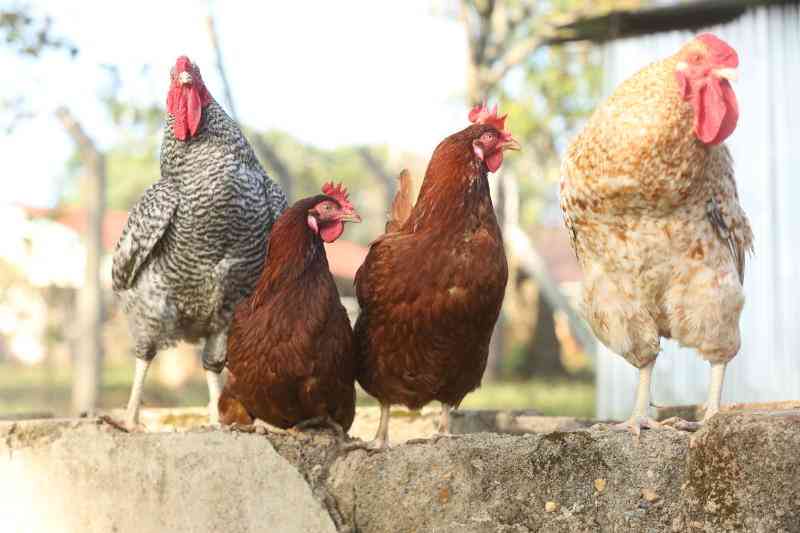
Broiler chickens are mainly raised in intensive deep litter system, where they are kept indoors and provided with comfortable conditions in form of dry litter, good ventilation, spacious accommodation, natural lights and good nutrition. Wet litter contributes immensely to condemnation of meat due to breast blisters, skin burns, footpad dermatitis and hock burns. Good quality litter that is dry and friable if well maintained throughout the production cycle will go along way in addressing most problems associated with wet litter. A good litter must have excellent absorbent qualities, should be light weight, non-toxic, inexpensive, able to dilute feacal material to minimise direct contact with the bird and cushion the birds from cold floor. Here are 10 tips for a good litter.
1. Good litter material
The litter types include pine wood shavings, saw dust, rice hulls, coffee hulls, chopped straw and shredded paper. The best to recommend is shavings from soft wood as they have good absorbent properties and are easily worked by the birds during dust bathing sessions.
2. Ideal litter depth
I personally recommend a litter depth of 8cm in open sided broiler unit, this allows the birds to easily scratch deep enough and turn the litter in the process making it dry all the time.
3. Minimum Ventilation
Chickens raised in hot environment do need minimum ventilation to provide quality oxygen just about 19 per cent. Maintain optimum relative humidity of 45-65 per cent, maximum ammonium and carbon monoxide levels of less than 10 ppm. These conditions ensure the litter remains dry and there is no built up of toxic gases in the unit. Ammonia mixed with wet litter is the main cause of breast and hock burns.
4. Good drinker management
The most common type of drinking systems are bell drinkers otherwise referred to as ‘open system’ and the nipple system also called the ‘closed type’. The lip of the drinkers should be adjusted to the level of the back of the chicken. If it is too low there will be massive water spillage. The drinker space should be 0.6cm per bird. For nipple system, the pressure should be correctly adjusted as per the manufacturer’s recommendation to avoid excessive spillage of water. Pressure of 50-90 ml/minute should suffice.
5. Adequate Heating
Foot pad lesions can start as early as during brooding period. Most farmers tend to close the units using polythene or gunny bags completely with the sole aim of conserving heat and reducing cost of heating the units. This practice will only result into poor litter quality. To avoid this, provide enough heat during the first 14 days as the chicks build up their ability to control their body temperatures.
6. Correct Stocking density
Correct stocking density is essential to broiler production in open sided housing. A good stocking density should be 1 square feet per bird or 30kg/ m2. Increasing this density will only result into poor litter aeration leading to wetness and scratches. In environmentally controlled units with tunnel ventilation system, this density can be increased to 39kg/M2 and yet maintain dry litter.
7. Good water quality
Stay informed. Subscribe to our newsletter
Water with highly dissolved minerals like calcium, magnesium and sodium will be highly saline. Levels higher than 1,000 ppm will result into watery faeces and end up with wet litter. Have your water tested at least twice per year to assess salinity levels.
8. Good quality and adequate feed
Source for the best quality feed in the market. Poor quality feed is associated with infection of the gut leading to diarrhoea and maldigestion. Feeding space must be adjusted to avoid unnecessary overcrowding around feeders resulting into wet litter and body scratches.
9. Manual turning of litter
Using a folk, manually turn your litter twice a day. Remove all wet litter and replace with fresh dry wood shaving. This also gives you time to observe your flocks as they grow.
10. Disease free flock
Observe good bio-security and vaccinate your birds according to the local disease condition. Consult your vet if there are signs of ill-health linked to excessive diarrhoea.
[For more information, contact Dr Watson Messo Odwako, Head Vet, Kenchic Limited]
 The Standard Group Plc is a
multi-media organization with investments in media platforms spanning newspaper
print operations, television, radio broadcasting, digital and online services. The
Standard Group is recognized as a leading multi-media house in Kenya with a key
influence in matters of national and international interest.
The Standard Group Plc is a
multi-media organization with investments in media platforms spanning newspaper
print operations, television, radio broadcasting, digital and online services. The
Standard Group is recognized as a leading multi-media house in Kenya with a key
influence in matters of national and international interest.
 The Standard Group Plc is a
multi-media organization with investments in media platforms spanning newspaper
print operations, television, radio broadcasting, digital and online services. The
Standard Group is recognized as a leading multi-media house in Kenya with a key
influence in matters of national and international interest.
The Standard Group Plc is a
multi-media organization with investments in media platforms spanning newspaper
print operations, television, radio broadcasting, digital and online services. The
Standard Group is recognized as a leading multi-media house in Kenya with a key
influence in matters of national and international interest.










